CR-V Heritage and Pedigree

- Fourth generation model
- Global model, sold in 160 countries with cumulative sales of over 5 million
- European model built in Europe since 1998
- Efficient, functional and capable
Originally launched at the 1995 Tokyo Motor Show, the Honda CR-V was one of the first of the modern generation of ‘soft roaders'. It became a benchmark for this fast growing segment with its practical size and excellent utility. The CR-V was designed primarily for on-road use, but with SUV styling and the quality customers expect from a Honda product. Sales began in Europe in 1997 and the CR-V quickly became a firm favourite with buyers, so successful in fact that production of the European models started in Honda's plant in Swindon, United Kingdom in 1998.

Launched in late 2001, the second generation CR-V took many cues from the original, retaining all of its best features including the rugged 4x4 styling and the ‘on demand' Real Time Dual Pump 4WD system. It offered much improved performance and economy, achieved with the introduction of Honda's 2.0-litre i-VTEC petrol engine, while the new body structure delivered increased interior space.
A further sales boost came in 2005 with the introduction of Honda's much acclaimed i-CTDi diesel engine. Perfectly complementing the petrol engine, the high output, high torque engine significantly enhanced the CR-V's all-round appeal. The third-generation CR-V arrived in 2007. This was the first CR-V to feature a vertically opening tailgate, a feature made possible by removing the spare wheel from the back door. Lower, shorter and wider than its predecessors, it offered improved on-road dynamics. A mid-life facelift in 2009 introduced the new generation diesel engine i-DTEC and a combination of diesel engine with automatic transmission.

Over five million CR-Vs have been sold across the world since its introduction in 1995 and the new, fourth generation Honda CR-V builds on the success of its predecessors with greater quality, practicality and refinement. The model that helped define the compact-SUV sector has been comprehensively redesigned for the European market.
For the first time, the CR-V will be offered with a choice of both two- and four-wheel drive, while improvements to the engine range have achieved a significant reduction in carbon dioxide emissions. Sales of the new CR-V will begin in Europe in November 2012 and it will be built at Honda's production facility in Swindon, United Kingdom.
Ryouji Nakagawa, the Large Project Leader (LPL) for the CR-V commented, "The first generation set out to combine the best elements of a car and an SUV. For the new CR-V, we have now achieved a perfect, centred balance between the efficiency of a car and the functionality and security of an SUV. In doing so, we have created a model that is efficient, versatile and capable."
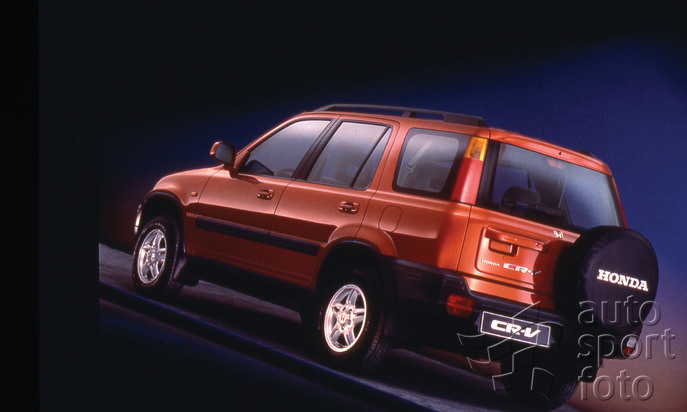
EXTERIOR DESIGN- CLEVER PACKAGING
- Reduced height and length without compromising interior space
- Increased luggage space
- Power tailgate exclusive for Europe
- Car-like driving position
- LED Daytime Running Lights and LED taillights
The pursuit of the perfect balance between a car and an SUV influenced every element of the development process, including the exterior styling. Exterior Designer Manabu Konaka explains: "The CR-V has always been a car for every occasion. It can be both casual and formal, but the aesthetic must always convey solidity and reliability." The length and height of the car have been reduced by 5mm and 30mm respectively compared with the current model, without reducing the interior space. "This is only one example of the new CR-V's improved efficiency," says Konaka. "This is a functional, efficient and confident car and we've tried to express that in the design."

While the fourth generation model is instantly recognisable as a member of the CR-V family, it asserts its own identity. Compared to the previous generation CR-V, the new model takes on a more aggressive and aerodynamic stance with deeper sculpting of the bodylines and a bolder nose section. The front bumper's smooth, flowing lines are joined by a horizontal three-bar grille and deep-set headlights. The lower front bumper is designed to convey SUV capability with a generous approach angle. The CR-V's signature vertical rear brake lights, which debuted on the original model, remain but introduce a more three-dimensional style. The CR-V's large wheels and bold wheelarches further emphasise its dynamic presence and capability.
The CR-V has been designed as a global car but the European model features a number of exterior refinements developed specifically for this market. A revised front bumper emphasises its dynamic appeal, while front LED daytime running lights and rear LED lights are other stylish additions.

The position of the windscreen has been brought forward by 60mm (measured from bottom of the windscreen) relative to the overall length of the car. As a result, the size of the engine compartment has been reduced. "At Honda, every project leader pursues our man-maximum, machine-minimum philosophy," says Nakagawa. "It is always our goal to reduce the size of the mechanical parts in order to provide more space for the occupants. It is a big challenge for our engineering and production teams, but one that we must take on."
The repositioning of the windscreen and the new bonnet design have provided a second benefit, The area of the nose of the car that cannot be seen from the driver's seat has been reduced to improve visibility and make the CR-V easier to manoeuvre. A 10mm increase in both the steering wheel and seat height adjustments has also ensured that a broader range of drivers can achieve an ideal driving position.

The synergy between form and function has played a critical role in the development of every CR-V and this latest model is no exception. The expansive glass area of the windows reveals the spaciousness of the cabin. Konaka says, "I am particularly proud of the rear window design. We wanted to extend it to the extremity of the vehicle to emphasise the sleek proportions, and this also had the advantage of increasing the boot space." With the rear seats folded flat, the boot capacity of the CR-V has grown by 148 litres to 1648 litres. If the space saver spare wheel is specified 147 litres to 1669 litres and with the seats folded up, the boot capacity is 589 litres. The load length has been increased by 140mm to 1570mm, while the height of the load lip has been reduced by 25mm to make it easier to load heavy or awkward items. The boot of the CR-V can now accommodate two mountain bikes or four sets of golf clubs.
A keyless entry system and power tailgate also make it easier for owners of the CR-V to exploit this enhanced practicality. Within Honda's global line-up for the CR-V, this power tailgate is unique to the European market and available on certain grades.

INTERIOR DESIGN- QUALITY AND FUNCTIONALITY
- Ergonomically efficient environment
- Interior roominess
- High quality finish
- NVH improvement
- 5in "intelligent integrated" Multi-Information Display (i-MID)
- Whiplash Mitigation Front Seat Design
- Easy fold-down one motion 60/40 split rear seat
The interior design concept for the new CR-V continues the man-maximum, machine-minimum philosophy. "The first thing that we wanted to achieve with the interior design was a feeling of openness," says the Interior Designer, Takehiro Ishibashi. "I wanted to communicate the feeling you get when you stand on top of a mountain, looking down on the valley and seeing a panorama of the landscape. It's a feeling of freedom, space and timelessness."

The influence of this thinking can be seen in the fascia design. "There are a number of horizontal layers which help emphasise the feeling of space," says Nakagawa. "We call this ‘lean-layered' design. By arranging the major functions in a series of layers, you create an ergonomically-efficient environment that is very intuitive." The major controls have been further grouped according to their function, with a ‘driver interface zone' behind the steering wheel and an ‘information interface zone' in the centre of the cabin.
The materials used have been carefully chosen for the European market. "The high quality finish on the top of the fascia was inspired by the marble-like pattern you find on Japanese Kobe beef," says Ishibashi. "On the decorative strip that flows across the fascia we used a special film that creates a 3D effect. I am really proud of our attention to detail in every aspect of this vehicle."
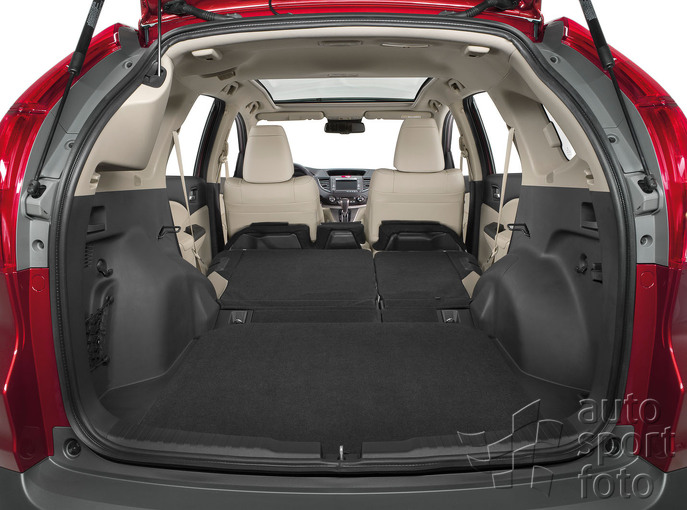
Care has also been taken to achieve a significant reduction in the engine and road noise entering the cabin. Sound insulation material has been applied to the floorpan below the passenger compartment, while sound absorption material has been fitted to the rear door, rear wheelarches, door frames, front bulkhead and bonnet. The doors also now feature a double seal. The net result is a 3dB reduction in cabin noise compared to the current CR-V.
This high quality ambience is further enhanced by an impressive range of equipment. In the cabin attention focuses on the 5 inch "intelligent" Multi-Information Display (i-MID), which controls the audio, telephone and navigation systems (where fitted). In order to emphasise the feeling of space inside, the door casings have been sculptured to create a concave shape. This has also allowed the front seat occupants to be moved closer to the sides of the car, making it easier to step in and out. As a consequence, more space has been liberated between the seats for a centre console that houses two cupholders, a storage compartment, an armrest and air vents for the rear seats.

The front seats also incorporate a whiplash mitigation system. Slits in the urethane portion of the seat back, folds in the cushion spring and a rotating mechanism on the cushion spring combine to absorb the occupant's energy in the event of an accident, alleviating the risk of whiplash injuries. The seats work in conjunction with the CRV's Advanced Compatibility Engineering (ACETM) body structure.
The hip point of the rear passenger seats has been lowered by 38mm compared to the current model, resulting in a more comfortable seating position and increased headroom. Moreover, a change in the design of the rear seats has allowed Honda's engineers to introduce Easy Fold-Down 60/40 Split Rear Seats, which can be folded flat in one movement. At the pull of a handle, the CR-V can be transformed from a five-seater passenger car into a versatile load-lugger. "This is a feature of which I am particularly proud," says Ishibashi. "It will make a big difference to how our customers use their CR-V."

EFFICIENCY
- Improved aerodynamics
- Choice of 2.0 i-VTEC and 2.2 i-DTEC engines at launch
- 2.0 i-VTEC engine available with choice of two- or four-wheel drive
- 12% reduction in CO2 emissions compared with current model
- Eco Assist and ECON Mode
- Idle-stop technology standard with manual transmission
The aerodynamics are another key area in which form and function go hand-in-hand. The adoption of a flat under floor and sculptured wheelarches have smoothed the air flow under the car, while a longer roof combined with aerodynamically optimised front bumper and rear spoiler help to manage the air-flow over the body. The result is a reduction in the drag coefficient by 6.5% compared with the current CR-V to the benefit of performance, fuel consumption and exhaust emissions.
Under the bonnet of the CR-V, customers will find either a 2.0-litre i-VTEC petrol engine or a 2.2-litre i-DTEC diesel engine. Both are a development of the engines found in the third generation CR-V but both have been comprehensively redesigned with a focus on reducing CO2 emissions. "We have placed a key emphasis on applying new technologies to reduce the friction in the engines and improve their efficiency," explains Nakagawa. Idle-stop technology has also been introduced on all models fitted with a six-speed manual gearbox.

Improvements in fuel economy and reduction of CO2 emissions in the new CR-V have been achieved without compromising driving pleasure. The power and torque outputs of the i-DTEC engine remain at 150PS and 350Nm respectively, but the CO2 emissions fall from 171g/km to 149g/km* (12%) for the manual version, and from 195g/km to 174g/km* for models equipped with the five-speed automatic transmission.
The power output of the 2.0-litre i-VTEC engine has risen from 150PS to 155PS*, while the torque has increased by 2Nm to 192Nm*. Despite this increase in performance, CO2 emissions have fallen from 192g/km to 173g/km* for the manual version, and from 195g/km to 175g/km* for the automatic.

Customers opting for the two-wheel drive CR-V will see a further reduction in exhaust emissions to 168g/km*. The introduction of a front-wheel drive CR-V responds to changing market conditions. Across Europe, two-wheel drive models now account for 51% of the petrol-engined compact-SUV market according to a survey conducted in 2011.
Also standard are Honda's acclaimed ECON mode and Eco Assist systems. When the ECON button is pressed the throttle response and air-conditioning are automatically adjusted to minimise fuel consumption. The Eco Assist system uses the car's dashboard display to advise drivers on how their driving style is impacting fuel economy, by changing the colour of the dial edges from white to green when driving more efficiently.

RIDE COMFORT, HANDLING AND ACTIVE SAFETY
- Car-like handling
- Motion Adaptive Electric Power steering system (MA-EPS)
- Real Time all-wheel drive with Intelligent Control System
- Hill Start Assist (HSA) and Hill Descent Control (HDC)
- Advanced Vehicle Stability Assist (VSA) system
- Advanced Driver Assist Systems (ADAS) including Adaptive Cruise Control (ACC), Collision Mitigation Braking System (CMBS) and - Lane Keeping Assist System (LKAS), which are new to the CR-V
- Emergency Stop System (ESS)
The new CR-V marks the introduction of a two-wheel drive model as well as upgrades to the car's suspension, steering and four-wheel drive system. Honda's development team undertook an extensive test program on European roads to improve the CR-V's ride quality without compromising its car-like handling or high-speed stability. The McPherson strut front and multi-link rear suspension has been upgraded with a 10% increase in damper rates all-round. An increase in the body's rigidity - bending rigidity is up 7% and torsional rigidity up 9 % - allows the suspension to operate more effectively.
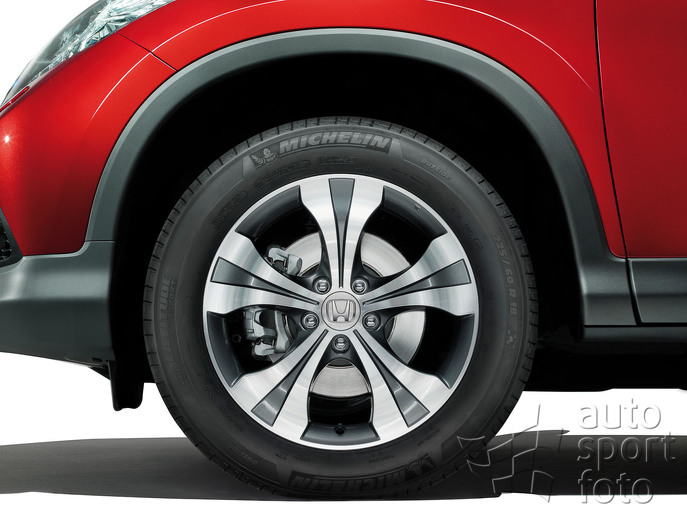
The next generation Motion Adaptive electric power steering system (MA-EPS) has been refined to combine easy manoeuvrability with increased feedback and response at higher velocity. This sophisticated new system also works with the standard Advanced Vehicle Stability Assist (VSA) system to detect instability in slippery road conditions and automatically initiates steering inputs that prompt the driver to steer in the correct direction.
The MA-EPS system also has key efficiency benefits. It's simple and compact and unlike a conventional hydraulic pump power steering system, it does not draw continuous power from the engine, helping to reduce fuel consumption.
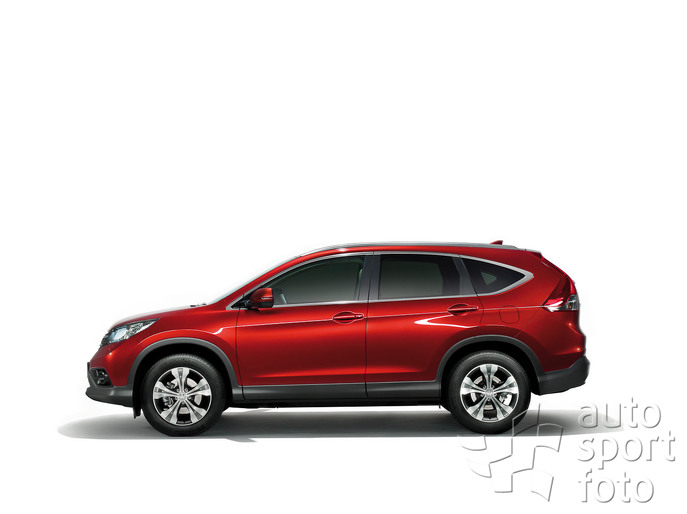
The majority of CR-Vs sold will continue to operate using all-wheel drive and the latest iteration of Honda's Real Time AWD system. The hydraulically activated "dual-pump" system of the third generation CR-V has been replaced by an electronically activated system that provides a faster response when a loss of traction is detected. It also reduces weight by 17 percent and minimizes internal friction by 59 percent. The advancements help to further minimize the negative impact on fuel economy common to virtually all four-wheel-drive systems.
There's also a range of electronic systems designed to make driving both easier and safer. Hill Start Assist (HSA) stops the vehicle rolling backwards during hill starts and is joined by Hill Descent Control (HDC), which debuts on the CR-V for the first time. Available on automatic models, it operates at up to 8kmh and helps the CR-V descend difficult terrain safely and consistently. These systems work in conjunction with the VSA and the MA-EPS systems.

The new CR-V is also the latest vehicle to employ Honda's Advanced Driver Assist System, or ADAS for short. ADAS incorporates Honda's Lane Keeping Assist System (LKAS), Adaptive Cruise Control (ACC) and the Collision Mitigation Braking System (CMBS), which warns of an impending collision and even applies the brakes to minimise an impact.
Buttons on the steering wheel operate the ACC system and allows the driver to choose both the speed and the preferred distance from the vehicle in front. Using a radar in the front grille, ACC monitors the distance to the car in front and can apply up to a quarter of the maximum braking force so as to maintain the set speed and distance. If more braking is required, the system provides a visible and audible warning. It operates between speeds of 30 and 180km/h.
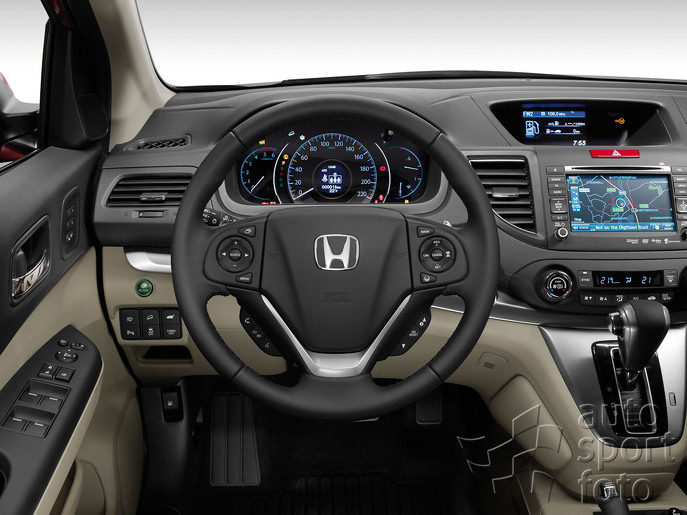
Designed for dual carriageway or motorway use, the Lane Keeping Assist System helps keep the car in its lane, and features on the CR-V for the first time. The system detects the lane markings using a camera mounted at the top of the windscreen. If the system detects that the car is not within the centre of the lane, it will automatically apply corrective steering, while issuing a visual and audible warning. The system applies up to 80% of the steering force required, with the driver providing the final 20%.
Honda's Collision Mitigation Braking System (CMBS) is a radar-based autonomous emergency braking system. At speeds above 15km/h, moving and stationary vehicles are detected along a path 100m ahead of the vehicle. When the system senses that the car is likely to hit one of these obstacles, a three stage process is initiated. In the first, (typically around 3 seconds before impact), the driver is alerted by visual and audible warnings. In the second stage, when the system senses that a collision is still likely (typically some 2 seconds before impact), three sharp tugs are given on the seat belt and the car automatically starts to apply some braking. Finally, when a collision is unavoidable, CMBS tightens the front seat occupants' seatbelts (using reversible tensioners different from the pyrotechnic devices used during the collision itself) and applies a high level of braking force. This braking can be supplemented by the driver up to the maximum that the car is capable of. Honda estimates that if all cars were fitted with CMBS, between 200,000 and 250,000 accidents could be either prevented or their effects mitigated every year.
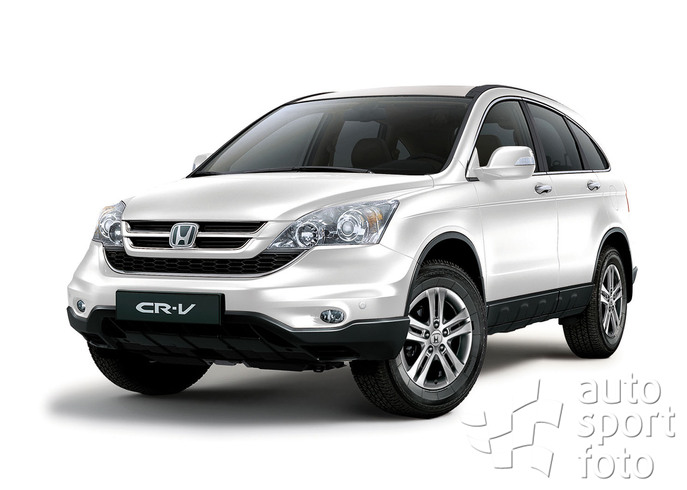
As its name suggests, Honda's Advanced Driver Assist System is designed to complement the driver, not to replace their input.
In an emergency stop situation, the Emergency Stop System (ESS) will automatically activate the brake and hazard warning lights (indicators). The lights will blink rapidly to warn following vehicles that the CR-V is stopping abruptly, alleviating the risk of a collision.
Confident, efficient and functional, the fourth generation of the CR-V builds on the success of its predecessors. "The CR-V is one of the key pillars of Honda's global portfolio," says Nakagawa. "To develop the latest version of a model that has sold over five million examples is a big responsibility, but we have enjoyed the challenge. If you want to improve a vehicle that is already well balanced and respected, the only solution is to enhance that vehicle in every area while making it smaller, lighter and more efficient than ever before. That is what we have done with the new CR-V."
*Honda internal figures, subject to change.
Diskusia k článku
Najnovšie galérie
































 Bohumír
Bohumír 
 Philippe
Philippe 
 Štefan
Štefan  Sebastien
Sebastien  Alister
Alister 